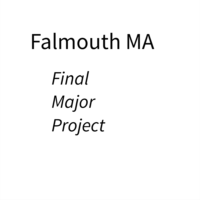My practice makes use of multiple forms of image capture, the majority of which are lens based forms using digital and analogue processes. The analogue processing has been restricted to hand processing of Black and White Film.
The workshop this morning was an introduction to automation of the manual development process using a machine. Falmouth have 3 machines that support the most common development processes. B&W negatives, E6 for colour transparency and C41 for colour negatives.
The B&W process is the fastest development process due to simplicity of the chemistry. The only thing that has to be set on the machine is the speed that the film moves through the machine which impacts development time. The
Loading the machine is done in a black bag similar to the process I use to load a developing tank, except the film is attached to a leader to ensure it goes through the machine safely. The end of the film has to be punched to allow the leader to be attached and the tap has to be removed from the other end to prevent the film snagging in the machine. The leader end of the film depends on the 120 camera used as they all rewind the film slightly differently. In the case of the Mamiya 645 the leader is attached at the exposed end.
I had two rolls of 120 FP4 Plus to develop. My developing tank can only take 1 roll of 120 at a time which takes about 20 minutes to develop by hand and then I have to leave the film to dry in the shower. The machine reduces processing time to about 10 minutes and the film is dry and is ready to take into the darkroom of scan on a flat bed scanner.
The C41 colour negative processing takes about 20 minutes while the E6 Colour Transparency processing takes about 45 minutes to process.
Based on my experience of processing film by hand meant I was comfortable handling film in a bag then only thing that was difficult is the height of the machines and it would probably be better for me to load the film sitting on a chair.
I initially processed two films taken in July 2017 of the Sandford Mill Filter House. One film developed OK however the second did not because the paper on the film was not tight and while sitting on the desk waiting to be processed the film had become over exposed resulting in light leaks across the film.


